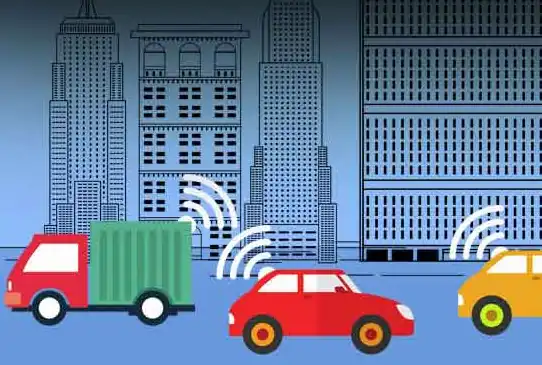The Internet of Things (IoT) refers to the interconnected network of physical devices, vehicles, buildings, and other objects that are equipped with sensors, software, and network connectivity, allowing them to collect and exchange data. These devices are able to communicate and share data with one another, as well as with other systems and devices, such as computers and smartphones, using the internet.

The IoT has the potential to transform many different industries, including manufacturing, transportation, healthcare, and agriculture, by enabling the automation and optimization of various processes and tasks. For example, a smart thermostat can automatically adjust the temperature in a home based on the weather and the occupants’ schedules, and a smart irrigation system can optimize the watering of crops based on real-time data on soil moisture levels.
The IoT also has the potential to improve people’s lives by providing greater convenience and efficiency. For example, a smart lock can be controlled remotely using a smartphone, allowing homeowners to easily grant access to their homes to friends, family, or service providers.
Overall, the IoT represents a major shift towards a more connected and intelligent world, where various devices and systems are able to communicate and collaborate in order to improve our lives and our world.
Internet of Things in Action
Anyone with a smartphone, connected thermostat, or internet-enabled home entertainment system can see how the Internet of Things has become a part of our daily lives. But apart from turning on the heating via an app, where can we see IoT technology in action?
IoT in the part lifecycle, tracking, and maintenance
Whether as a cog in a machine or a component of an end product, individual objects (or parts) can provide critical information as to the state of the product they form. Connected sensors and sophisticated analytics within individual components could track part provenance right from the manufacturing process to the end of their useful life – sharing data on how the component should be maintained and how it has reacted to frequent use.
IoT in transportation
Having been woken by your smart alarm, you’re now driving to work. On comes the engine light. You’d rather not head straight to the garage, but what if it’s something urgent? In a connected car, the sensor that triggered the check engine light would communicate with others in the car.

A component called the diagnostic bus collects data from these sensors and passes it to a gateway in the car, which sends the most relevant information to the manufacturer’s platform. The manufacturer can use data from the car to offer you an appointment to get the part fixed, send you directions to the nearest dealer, and make sure the correct replacement part is ordered so it’s ready for you when you show up.
Shipping logistics industry
In the shipping industry, keeping track of cargo is key. IoT-enabled sensors can detect and share the location of cargo, the temperature within containment units, and track whether it reaches its destination on time and intact. Shipping documents such as bills of loading and customs forms can also be easily shared electronically between the freight companies, customs officials, and the person who sent or received the package.
Building management
Connected sensors build up a wealth of useful data as to the function of particular systems within a building. Lights, for instance, air conditioning, or security alarms. This data forms a log of how the building is accessed and used, which can be shared with its owner, tenants, and building management teams.
These are just some of the ways that the Internet of Things (IoT) has an impact on the world around us.
